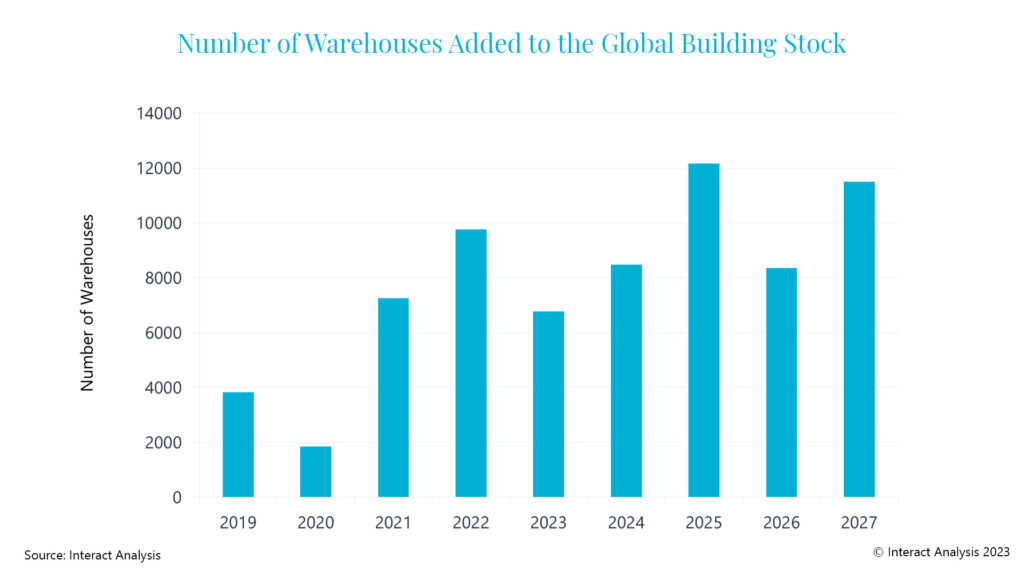London, UK: The economic downturn has hit global warehouse construction hard, according to research by Interact Analysis.
Warehouse construction has suffered from the effects of poor economic conditions across much of the globe, in particular rising interest rates.
It is expected the US will see a “meaningful” downturn within the next 12 to 18 months and, consequently, Interact Analysis forecasts a decline in the rate of warehouse construction in the coming years. Despite this, the growth in e-commerce since the pandemic is likely to dampen the shock to the warehouse construction sector. This is a lagging indicator, so a significant decrease is expected in 2H 2023 and 1H 2024. Overall, 6,700 warehouses will be added to the global building stock in 2023, a reduction of 35% compared with 2022, but still higher than pre-Covid levels, Interact Analysis says.
Overall, almost 10,000 warehouses were added to the building stock in 2022. In 2023 this will drop to 6,700, Interact Analysis says. China and the US are leading the way in terms of warehouse construction. In 2022, the two countries combined accounted for 58% of total square footage added. The US’s total warehousing stock increased by 6% over the year and China’s by 5%. The updated research shows that Japan and France registered the lowest growth in terms of additional warehouse square footage in 2022.

Rueben Scriven, research manager, Interact Analysis, says: “It is important to realize the downturn in warehouse construction is not due to a lack of demand. Rather, it is due to high interest rates and poor economic conditions. The slowdown in warehouse construction is likely to be short-lived as the demand for sites is still there. Rent prices are anticipated to increase in the mid-term and e-commerce will continue to drive demand over the long term.
“Regarding automation, although we expect to see a decrease in demand for end-to-end automation, by the end of 2022 18% of all warehouses had some form of automation installed and this is set to increase to 26% by the end of 2027. Food & beverage warehouses, and parcel sectors report the highest levels of automation in their warehouses.”







